Search Results for Tag: research
New report sees Arctic melt on course to tip global climate
Scientists say the Arctic archipelago of Svalbard has seen such extreme warmth this year that the average annual temperature could end up above freezing for the first time on record. Ketil Isaksen of the Norwegian Meterological Institute said today the average temperature in Longyearbyen, the main settlement in Svalbard, is expected to be around 0 Celsius with a little over a month left of the year. He called the abnormal warmth “shocking” and beyond anything he could have imagined 10 years ago. The normal yearly average is minus 6.7 C.
And that is not the only shocking thing going on up north. The Arctic sea ice is melting in November. Temperatures in the region are 20 degrees Celsius above usual. Reindeer are dying across Siberia. Polar bears are stranded on land. It’s hard to keep up with the extent and speed of climate change in the far north of the planet. And we in the media have to be aware of the danger that the reports become so commonplace the “new normal” no longer arouses interest.
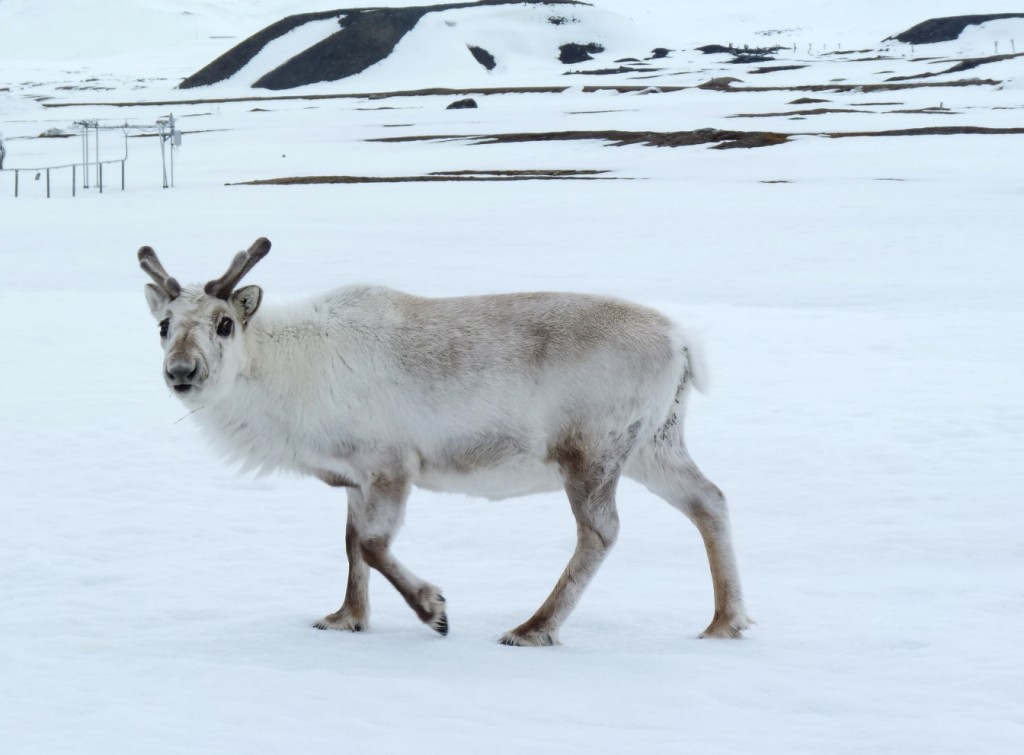
Svalbard’s sturdy reindeer are adapting to climate change. In Siberia, thousands of animals have died of starvation. (Pic: I.Quaile)
Warming, warming, hot
Yet the ever faster melting of our Arctic ice could spell disaster even for distant regions of the planet. What happens in the Arctic doesn’t stay in the Arctic, as discussed here on the Ice Blog many times before. But a new, key report launched today indicates that the effects of increasingly rapid Arctic warming could be set to push global climate change out of control.
The Arctic Resilience Assessment (ARA) is an Arctic Council project led by the Stockholm Environment Institute and the Stockholm Resilience Centre. It is based on collaboration with Arctic countries and Indigenous Peoples in the region, as well as several Arctic scientific organizations. The ARA (previously Arctic Resilience Report) was initiated by the Swedish Ministry of the Environment as a priority for the Swedish Chairmanship of the Arctic Council (May 2011 to May 2013) and is being presented under the US Chairmanship. It aims to synthesize knowledge on Arctic change and how people and the ecosystem are coping with it, bringing the wide range of different factors together.
“Environmental, ecological, and social changes are happening faster than ever in the Arctic, and are accelerating. They are also more extreme, well beyond what has been seen before. This means the integrity of Arctic ecosystems is increasingly challenged, threatening the sustainability of current ways of life in the Arctic and disruption of global climate and ecosystems”, the report says.
Beyond the tipping point
The researchers issue a stark warning: “Some changes are so substantial (and often abrupt), that they fundamentally alter the functioning of the system: an ecological “tipping point” has been crossed. The report examines 19 of these “tipping points” or “regime shifts”, as they are also known: “They affect many ecosystem services that are important to people within and outside the Arctic: from regulating the climate, to providing sustenance (e.g. through fishing)”, the experts tell us.
“The consequences of some of these shifts are likely to be surprising and disruptive – particularly when multiple shifts occur at once. By altering existing patterns of evaporation, heat transfer and winds, the impacts of Arctic regime shifts are likely to be transmitted to neighbouring regions such as Europe, and impact the entire globe through physical, ecological and social connections”, the report says.
The tipping points discussed in the report include the replacement of white ice and snow, which reflect heat back into space, by darker green vegetation or ocean water, which absorbs more heat, higher releases of methane and changes to ocean circulation and so weather patterns around the globe caused by an influx of melting snow and ice.
Major impacts inevitable?
Johan Rockström, director of the Stockholm Resilience Centre and co-chair of the five-year study said in a statement: “If multiple regime shifts reinforce each other, the results could be potentially catastrophic.… The variety of effects that we could see means that Arctic people and policies must prepare for surprise. We also expect that some of those changes will destabilize the regional and global climate, with potentially major impacts”.
The report stresses that many of the changes and feedback effects in process are poorly understood and in need of much more research.
“Arctic ecological protection is now a global concern, and worldwide monitoring is inadequate”, the authors write.
Political “regime shift”?
To reduce the risk of these tipping points, strong action would have to be taken to mitigate climate change, the authors conclude. Aha. Now there’s the rub.
In the Guardian, Fiona Harvey notes the report comes at a critical time in politics, with Donald Trump’s announcement this week that he plans to take away NASA’s budget for climate science and put it into space exploration. She quotes Marcus Carson of the SEI, co-editor of the report:
“That would be a huge mistake…It would be like ripping out the aeroplane’s cockpit instruments while you are in mid-flight”.
If Mr. Trump also makes good his pledge to revive the US coal industry and abandon the Paris Climate Agreement, the chances of halting warming and the climate feedback mechanisms which could spell disaster would seem to be melting away along with that Arctic ice. Not so tasty food for thought this weekend. Well, I could distract myself by getting out the lawnmower. It has been so warm here this week the birds are chirping like spring and the grass has started to grow again.
Greenland ice holds Cold War peril
It sounds like something from a science-fiction novel or a disaster movie. A hidden city under ice, housing 200 people, complete with hospital, cinema, church and research labs – and powered by a mini nuclear reactor. In fact it is reality and lies below the ice of north-west Greenland. The building of Camp Century was started in 1959, by US army engineers.
The camp was abandoned when the glacier above turned out to be shifting much faster than expected in 1967, threatening to crush the tunneled base below. Pollutants including PCBs, tanks of raw sewage and low-level radioactive coolant from the nuclear reactor were left behind.
“When the waste was deposited there, nobody thought it would get out again”, William Colgan, an assistant professor in the Lassonde School of Engineering at York University in Canada, told AFP. Colgan is co-author of a study published in August: Melting Ice could release frozen Cold War-era waste.
Unfortunately, recent research results have told us that the ice island of Greenland is melting even faster than previously thought. A new study published this week in the journal Science Advances using GPS to help estimate how much Greenland ice is melting, comes to the conclusion it is losing around 40 trillion pounds more ice a year than scientists previously thought. That is around 7.6 percent of a difference.
GPS maps past and future ice loss
Most measurements of ice sheet loss use a satellite that measures changes in gravity, and uses computer simulations to calculate the weight loss of ice. But co-author Michael Bevis of Ohio State University told the news agency AP that a portion of the mass calculated by the satellite as ice mass, is actually made up of rocks, which rise up to replace the ice when it goes. This distorts the picture, giving the impression there is more ice than there actually is.
The new study also reconstructs ice loss from Greenland over millennia and comes to the conclusion that it is the same parts of Greenland – the north-west and the south-east – which are losing most ice today as in the distant past. The authors say this means the rapid ice lost we have seen over the last 20 years is part of a long-term trend, being exacerbated by climate change. Damian Carrington in the Guardian, quotes Christopher Harig from the University of Arizona as an independent scientist not involved in the study:
“The new research happening now really speaks to the question: ‘How fast or how much ice can or will melt by the end of the century?’ As we understand more the complexity of the ice sheets, these estimates have tended to go up. In my mind, the time for urgency about climate change really arrived years ago, and it’s past time our policy reflected that urgency.”
Frozen hazards await release
Coming back to Camp Century – here, and elsewhere in the “frozen North”, a lot of the perils once locked safely inside an icy safe are now lurking ready to emerge when the time comes. Colgan led a study published in August in the journal Geophysical Research Letters, which found that higher temperatures could eventually result in toxic waste from the base being released into the environment. By 2090 the amount of ice melting may no longer be offset by snowfall, meaning the toxic chemicals could start leaking into the environment, the study found. Even before that, fissures in the snow could lead to melt water seeping into the crushed tunnels, currently located just 35 metres below the surface.
This is just one spectacular example of a problem that is widespread across the Arctic. Anthrax spores, nuclear waste from subs and reactors … and these are only the human-made dangers. The permafrost is sometimes described as a “time bomb”, with masses of methane and carbon stored as part of natural processes coming to the surface as the world warms.
The news story on AFP centres on who is responsible for cleaning up the pollution from the under-ice camp. The USA and Denmark signed a treaty to permit the construction of Camp Century, code-named “Project iceworm”. Officially, it was to provide a laboratory for Arctic research projects. AFP says it was also home to a “secret US effort to deploy nuclear missiles”. Maybe it was lucky the project had to be abandoned in 1967. But the legacy remains in the form of the nuclear waste left buried under the snow when the reactor was removed.
We have the technology, but…
Study author William Colgan believes the physical logistics of decontaminating the site may not be the biggest challenge involved in all of this. “The environmental hazard is relatively small and far away and there are only a few native towns close by”, AFP quotes.
I was shocked by this statement, which seems to imply that we don’t need to worry about “a few native towns”. I hope I have misunderstood him here. Surely the lives of these small communities should have top priority?
But I can follow his reasoning that establishing which country is responsible for making good the damage is harder than the actual physical clean-up. (He also mentions that the USA and Denmark have experience in similar clean-up operations around the Thule air base, which is around 240 toxic messes or worrying that all our technology cannot prevent destruction of the fragile Arctic environment if we carry out risky operations?)
A worrying precedent
Colgan says the dispute over responsibility “could help set a precedent for other conflicts arising from climate change”. Now that is a very worrying prospect. Unfortunately, it is also a highly realistic one.
When it comes to accepting responsibility for the climate change which is speeding up the melting of Greenland’s huge ice-sheet – and taking action to halt it by abandoning fossil fuels – conflicts are virtually pre-programmed.
When it comes to the costs of dealing with the migration of people forced out of their homes by sea-level rise, flooding, drought, and of ensuring progress for developing countries without climate-harming fossil fuels, states are unlikely to be queuing up to foot the bill.
China, USA climate pledge – all talk, no action?

Arctic interest: China maintains a research station in Ny Alesund, Spitsbergen (Pic: I.Quaile)
In a blog post earlier this year, I mused on the danger of everybody sitting back saying, “Yes, we did”, while the planet continues to break all temperature records and fossil fuel emissions continue to rise, now that all the hype surrounding the Paris Climate Agreement in December has worn off. Back to business as usual?
It’s now September and China and the USA have made the headlines telling us they are ratifying the agreements. Of course nine months (since Paris) are tiny grains of sand in the giant egg-timer of planetary evolution. (Have those egg-timers themselves been consigned to the museum in our digital 21st century? Not important). But then again, we humans have “hotted up” the pace at which our climate, planet, atmosphere, ocean are changing dramatically.
Fireworks display or starting gun?
So how do I feel about the US-Chinese announcement? I wish I could say this makes me rejoice. Sure it’s a step in the right direction. And without action by these two top climate abusers, everybody else’s efforts would basically be worthless.
The agreement must be ratified by 55 parties representing 55 percent of total global emissions to enter into force. We are now at something like 25 parties and 40 percent of emissions, which gives ground for hope the agreement could enter into force by the end of the year.
But the proof, of the pudding lies, as always, in the eating.
The drivers of change
I have been convinced for some time that crippling air pollution will drive China to move away from fossil fuels.
I think back on an interview I recorded with Chinese expert Lina Li from the Adelphi thinktank in Berlin, when she told me she thought China’s air pollution problem would speed up the country’s ratification and implementation of the Paris Agreement. You were right, Lina!
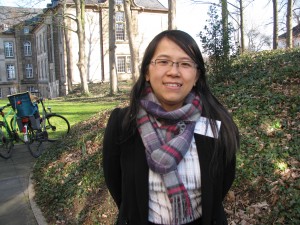
Lina Li from the Adelphi think-tank told me pollution concerns could speed up China’s climate action (Pic. I.Quaile)
As far as the USA is concerned, the outcome of the forthcoming election is clearly the key factor in determining how fast – or even whether – that country will move forward.
Doom and gloom?
Working on my Living Planet show for this week, I have been listening through reports on the Kuna people off the coast of Panama losing their island home to the waves, and how people in northwestern Kenya are starving because of changed rain patterns.
Forest fires, communities getting ready to “abandon home”, more extreme storms and flooding – these are all becoming so commonplace they are threatening to lose “news value”.
The CO2 concentration in the atmosphere is still climbing steadily. The global temperature is already one degree Celsius higher than it was at the onset of industrialization. That means very rapid action is needed to keep it to the agreed target of limiting warming to two degrees and preferably keeping it below 1.5 degrees.
A long, long way to go
Yes, the Paris Agreement was hailed widely as a breakthrough, with all parties finally accepting the need to combat climate change by reducing emissions of greenhouse gases. But so far, the emissions reductions pledged would still take the world closer to a three-degree rise in temperature.
Earlier this year, the International Energy Agency (IEA), issued a warning that governments can only reach their climate goals if they drastically accelerate climate action and make full use of existing technologies and policies. I wish I could say I could see this happening fast.
In my programme this week, I also have an interview my colleague Sonya Diehn conducted with Luke Sussams, from the UK-based think tank “Climate Tracker Initiative”. That is the group that came up with the term “stranded assets” which, in turn, inspired the Divestment movement.
He explains how it makes sound economic sense to shift investment out of coal and oil and into renewables. He thinks the clear advantages – less pollution, no greenhouse gas emissions, lower costs – are the best arguments to convince developing countries to “leapfrog” the fossil fuels stage and get into green energy – and into decentralized, off-grid solutions in a big way.
It’s the economy, stupid?
It seems those economic arguments are what we need. He cites the case of Rockefeller divesting from EXXON only after years of trying to convince them to change their policy on climate change. First, he argues, we should try to change things from within. If that fails, divestment may be the next option.
At the risk of seeming cynical, I have long believed that money is the key to saving the climate. The transition to a low-carbon economy is underway, but it will only succeed when governments and companies – and ultimately also consumers – realize it benefits their coffers and their pockets.
The technology is there. I am very doubtful about whether we will manage to get emissions to peak in time for us to keep to the 1.5 degree target which scientists have me convinced is what we need to do.
It seems we will need to move on to take some of the carbon out of the atmosphere using technologies now being tested – but no way ripe enough for mass implementation. I remember a Guardian interview with IPCC chief scientist Hoesung Lee a couple of months ago. He says we can still keep to the two-degree target, even if emissions do not peak by 2020, as ex- UN climate chief Christina Figueres maintained.
But he warned the costs could be “phenomenal”. He believes expensive and controversial geoengineering methods may be necessary to withdraw CO2 from the atmosphere and store it.
Meanwhile, that giant cruise-ship, the Crystal Serenity, is half-way through its controversial trip via the Northwest Passage. The operator says the trip is so successful and interest is so high they will do it again next year. They are unlikely to be foiled by a sudden onset of global cooling.
In scientific circles, the alarm bells are ringing over rising emissions from melting Arctic permafrost.
Did somebody say something about feedback loops and tipping points? Or do we just carry on regardless?
Happy Birthday Koldewey Station
25 years ago, Germany set up its own Arctic research station in the tiny settlement of Ny Alesund, in the Svalbard archipelago.
Today, 11 countries run research stations there. Arctic research is a very international operation, and countries share the facilities available in Ny Alesund, one of the northernmost settlements in the world. Germany and French now run a joint station, known as the AWIPEV station, after the polar institutes of the two countries. The rest is in this picture gallery, which I put together to mark the station’s “silver jubilee”. It combines pictures from several visits I made to the station in recent years and some background about what happens up there in the “high north”.
25 years of German research in the Arctic.

View from Mount Zeppelin over the Kongsfjord, Svalbard, above Ny Alesund research village. (Pic. I.Quaile)
Alpine ice – no more than a memory? New archive of ice cores
Alpine glacier – endangered species? (Pic: I.Quaile)
It was with mixed feelings that I read an article drawn to my attention by a colleague earlier in the week.
“Protecting Ice Memory” is the subject –a description of a new project to create a “global archive of glacial ice for future generations”.
I am generally enthusiastic about all projects concerning ice. The worrying thing is the reason why this project has been deemed necessary.
History melting
“The goal is to build the world’s first library of ice archives extracted from glaciers which are threatened by global warming”. There we have it. Another frightening acknowledgement of the extent and speed of global change.
How sad that our human-induced warming is threatening our ice, especially here in the European Alps, where we do not have as much ice as in some other parts of the globe. How good that we have the technology to save some of it for posterity. How frustrating that while we also have the technology to shift to a zero-carbon economy and stop the ice melting, we are not actually doing it anything like fast enough.
Starting on Monday August 15th and carrying on until early September, an international team of glaciologists and engineers (French, Italian, Russian and American) will be travelling to Mont Blanc, in particular to the “Col du Dome” glacier area, which is 4,300 metres or 14,108 feet up. They will be drilling the first ice cores for the “Protecting Ice Memory” project.
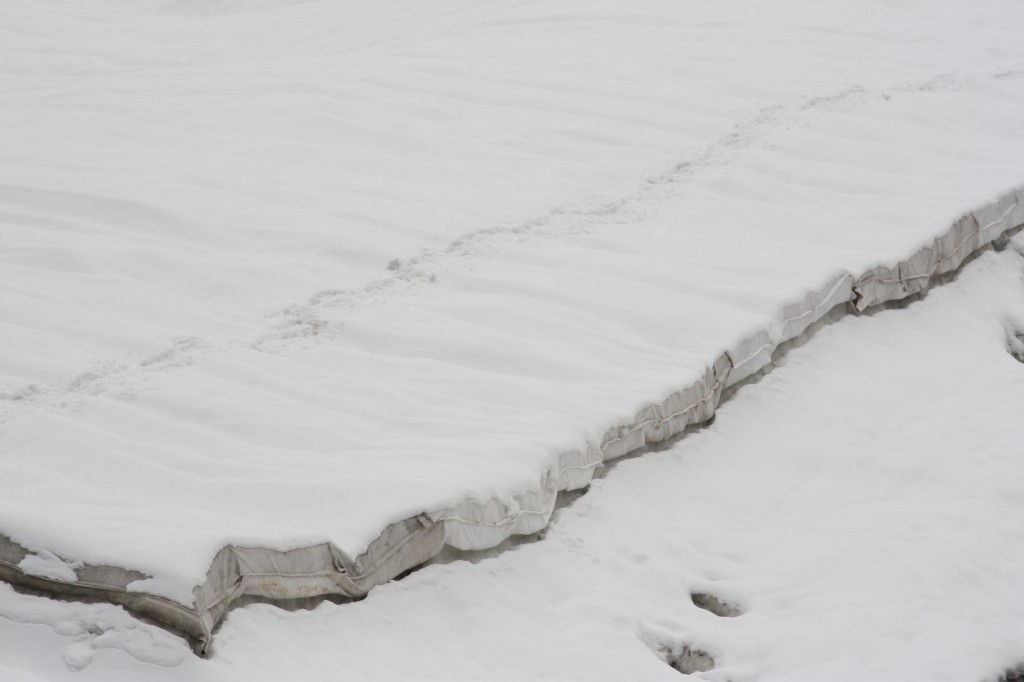
Some glaciers are being covered in summer to stop them melting, this one I saw in Switzerland. Proved ineffective. (I.Quaile)
Saving the cores
The team will be coordinated by Patrick Ginot from the French Research Institute for Development (IRD), working within the UGA-CNRS Laboratory of Glaciology and Environmental Geophysics (LGGE), and Jerome Chappelaz, director of Research at the CMRS and working within ths same laboratory.
The team will be extracting three ice cores each 130 metres long. These will be taken down by helicopter and taken to the LGGE in Grenoble. Clearly they will have to kept very cold during the process.
In 2019 (why only then, I wonder?), one core will be analysed to start a database which is ultimately to be made available to the whole world scientific community.
The other two will be transported by ship to ANTARCTICA. Yes, you read correctly. There, they will be taken on tracked vehicles across the high plateaus to be stored at the Concordia station, which is run by the French Paul-Emile-Victor Polar Institute (IPEV) and its Italian partner, the National Antarctic Research Programme (PNRA)
In the long term, dozens of ice cores are to be stored in a snow cave at -54° Celsius, which the project describes as “the most reliable and natural freezer in the world”.
The Mont Blanc glacier is the first step. The next will be carried out in 2017 on the Illimani glacier in the Bolivian Andes.
Global operation
It seems other countries with access to glaciers are also hoping to join the project, including Germany, Austria, Switzerland, Brazil, the USA, Russia, China, Nepal and Canada. That sounds like a real mega-project.
I have commented often enough here on the Ice Blog on the dwindling ice in my own favourite hiking territory in the German and Swiss Alps. Last week it was the turn of the New Zealand Alps to be the focus of this rather sadly motivated attention.
The scientists who came up with the project had the idea after observing a rise in temperatures on several glaciers. At ten year intervals, they say the temperature near the glaciers on the Col du Dome and Illimani in the Andes has risen between 1.5 degrees and 2 degrees (Those figures sound familiar from somewhere…)
“At the current rate, we are forecasting that their surface will undergo systematic melting over the summer in the next few years and decades. Due to this melting and the percolation of meltwater through the underlying layers of snow, these are unique pages in the history of our environment which will be lost forever”, says the project description.
The scientists compare their project to the Svalbard Global Seed Vault on the Norwegian Arctic island of Spitsbergen. Before I read that part, this very comparison had already come to my mind. I had a rare opportunity to visit that vault a couple of years ago.
Svalbard to Antarctica
But one of the very worrying things in that connection is that even that “secure coldspot” has in turn been affected by permafrost melt – at least at a level close to the surface, which caused damage to the entrance area in the early stages.
Will the Svalbard vault ultimately have to be moved to the even colder Antarctic at some point in the future, one might wonder?
I remember a visit to the Alfred-Wegener Institute in Bremerhaven, Germany’s polar agency. One of the highlights was a look into the laboratory where ice cores are processed. Clearly, these provide invaluable evidence of how our planet and life on it have developed. Climate and environmental archives of a quite unique nature.
“Our generation of scientists, which bears witness to global warming, has a particular responsibility to future generations. That is why we will be donating these ice samples from the world’s most fragile glaciers to the scientific community of the decades and centuries to come, when these glaciers will have disappeared or lost their data quality”, says Carlo Barbante, the Italian project initiator and Director of the Instutite for the Dynamics of Environmental Processes – CNS, Ca’Foscari University of Venice”. What a sobering thought – and a daunting task.
And what an inspiring campaign to rescue what it seems we will not be able to save in time in the natural world.
Projects like this cost a lot of money. It is relying on private sponsors. The current European project has funding. The Université Grenoble Alpes foundation is now running a campaign to fund the Bolivian expedition.
Here’s hoping the money will be forthcoming.
And here’s hoping the international community will speed up efforts to halt global warming before we have to create archives to try to document all the ecosystems, species and habitats we are losing faster than we can count them.



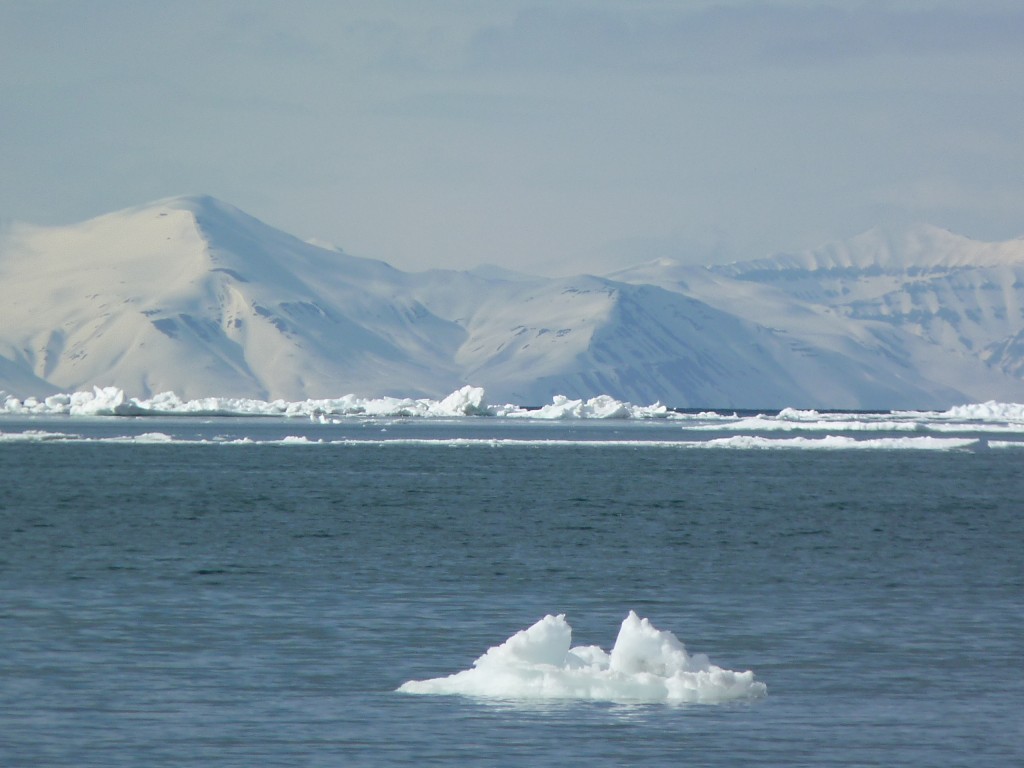
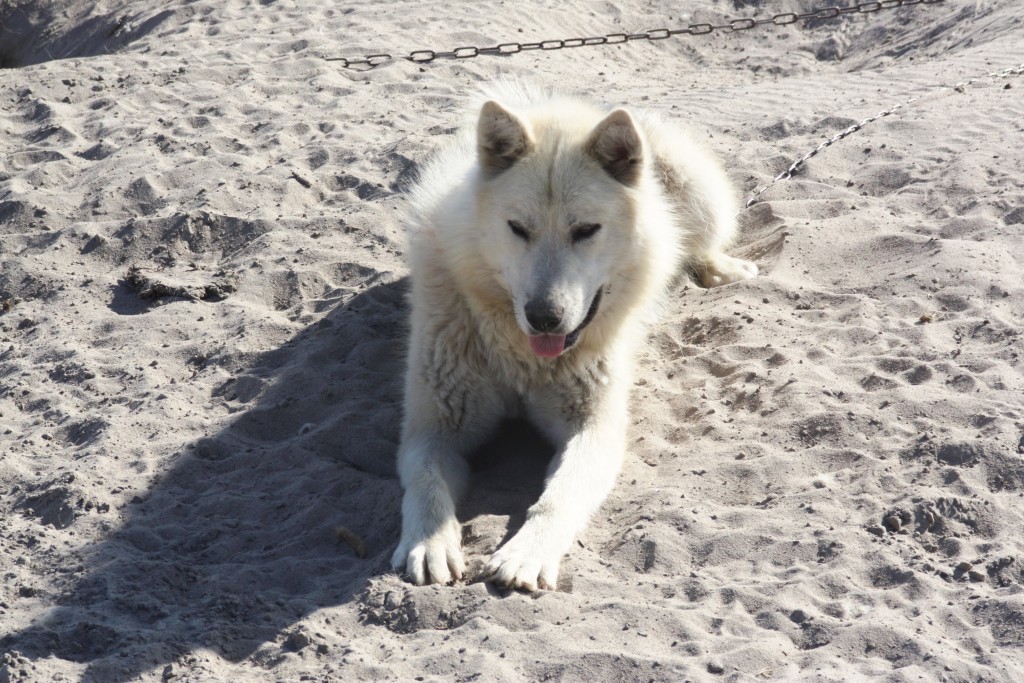
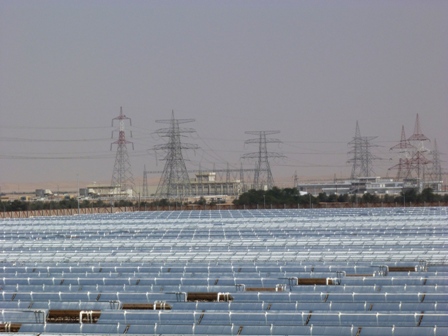

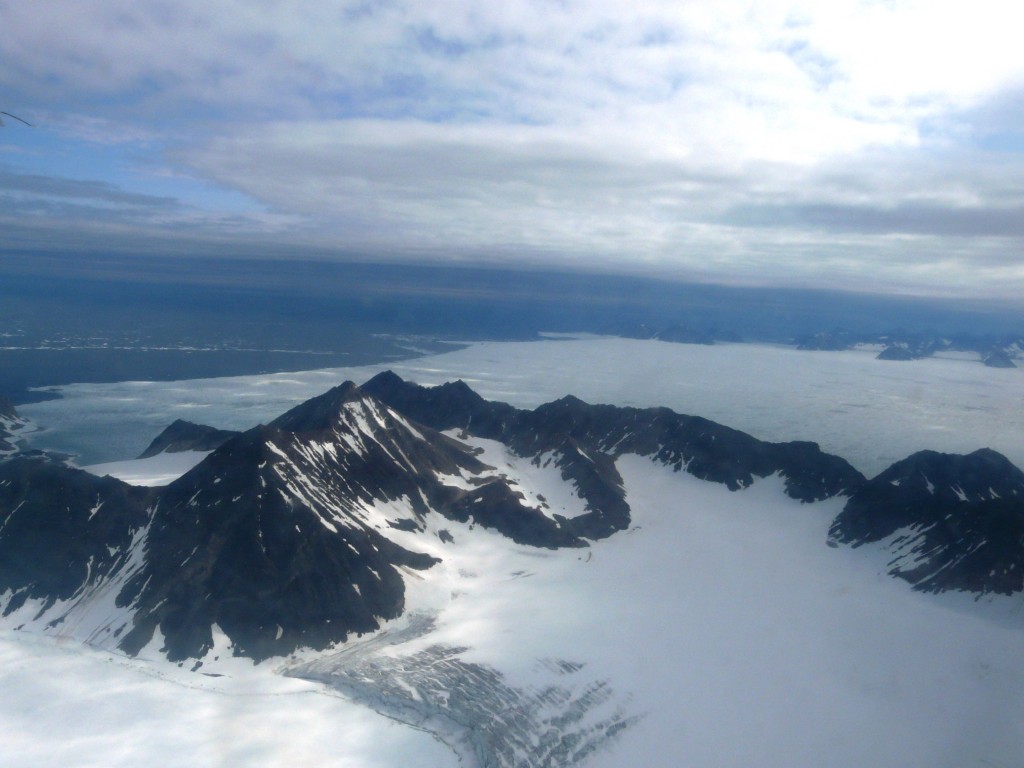
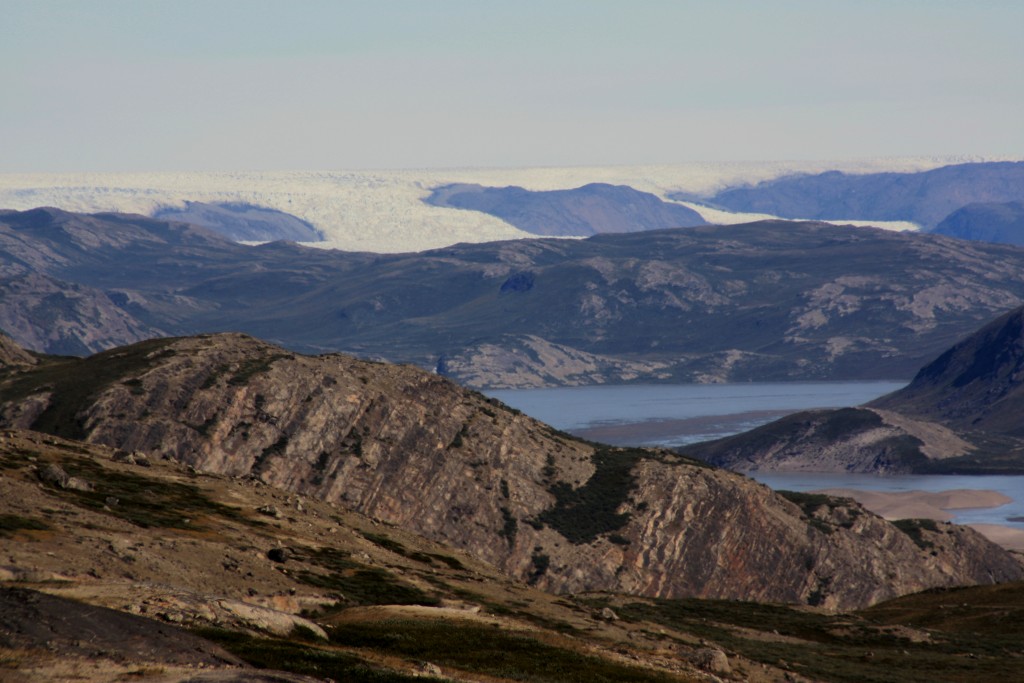

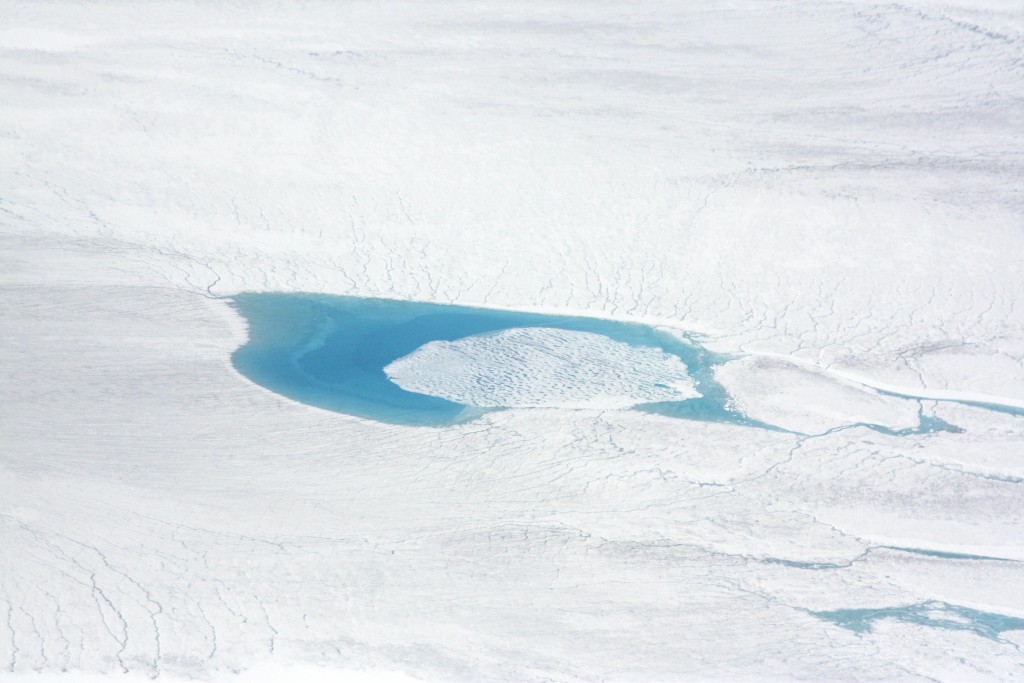
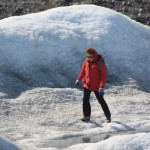

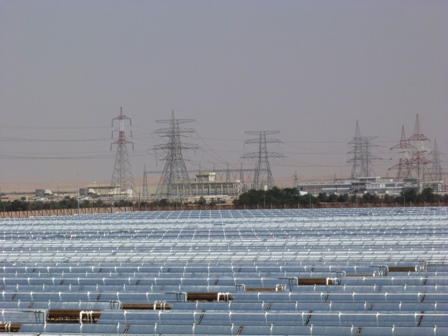

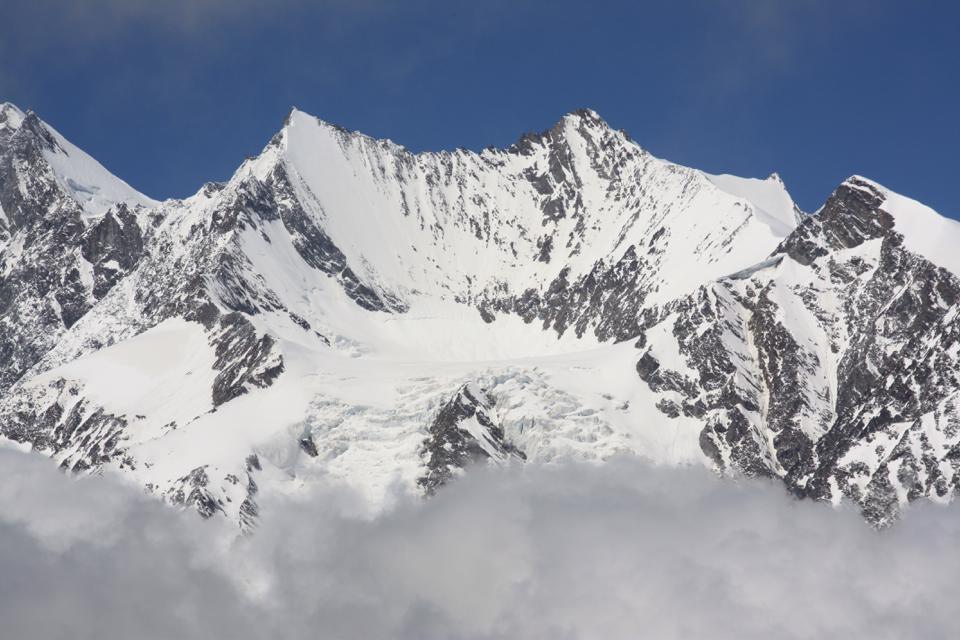
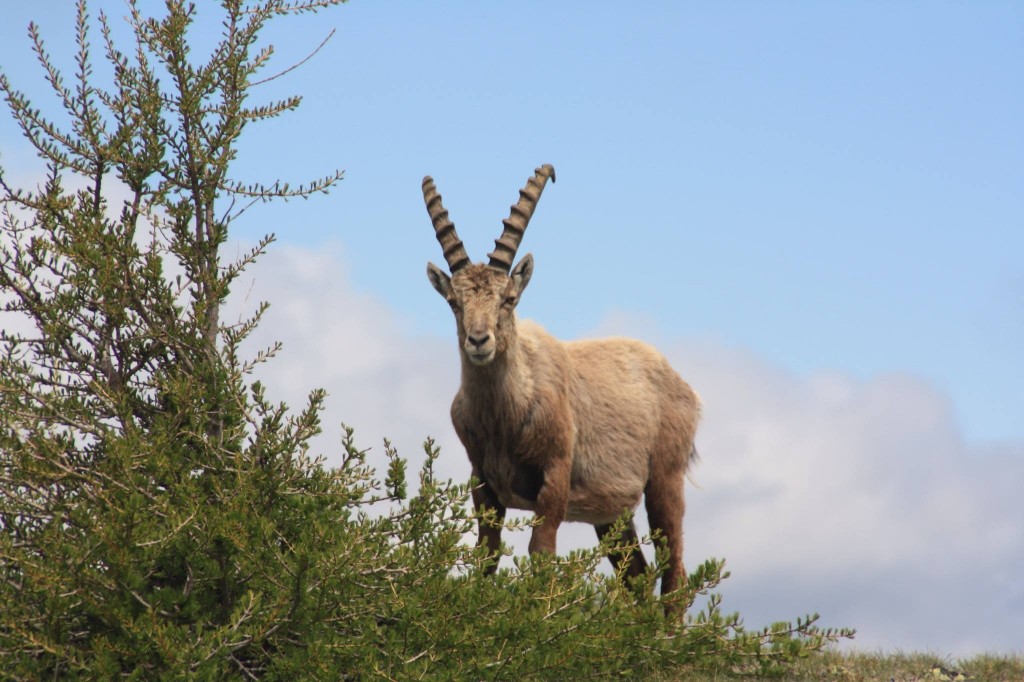
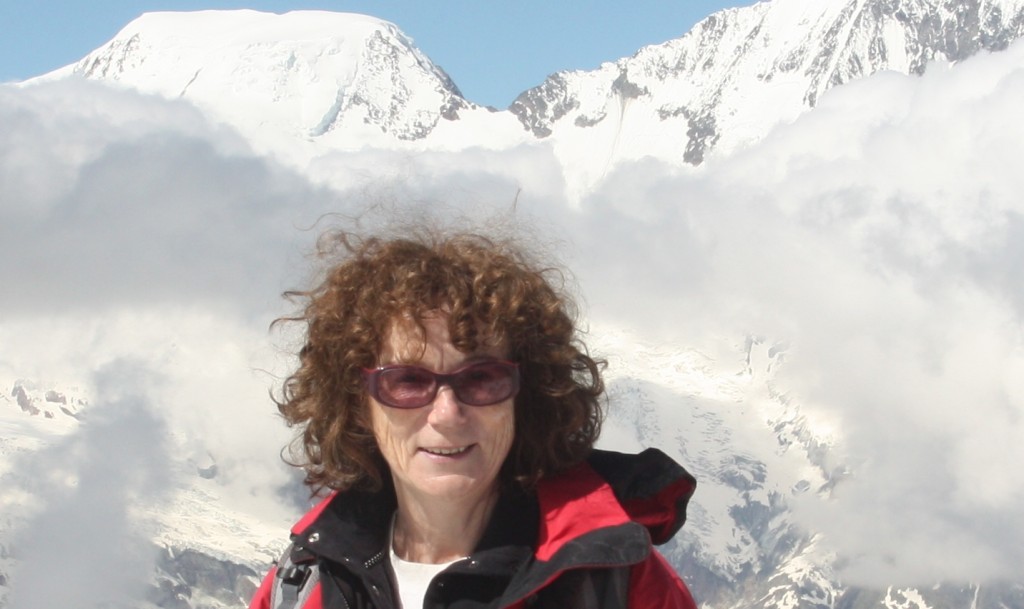
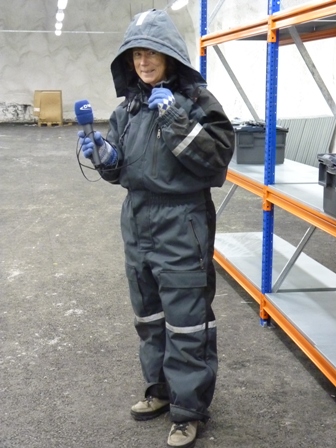
















Feedback